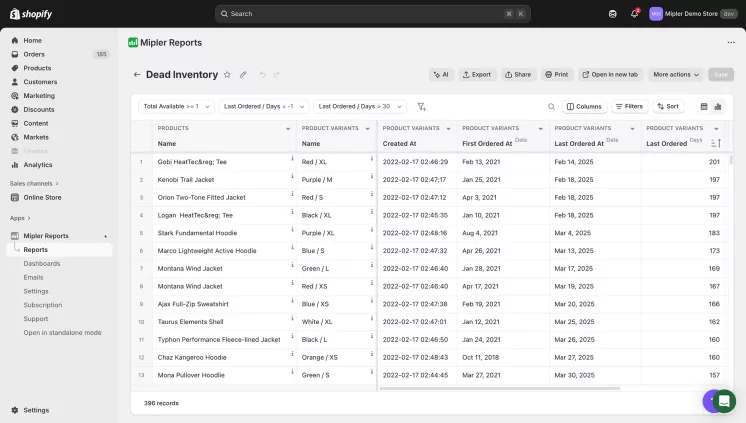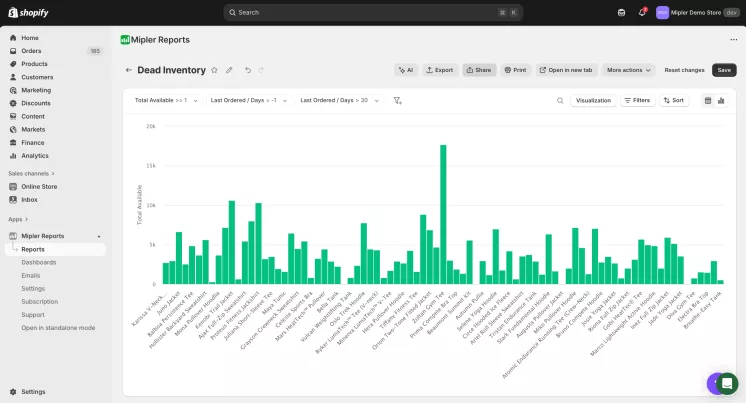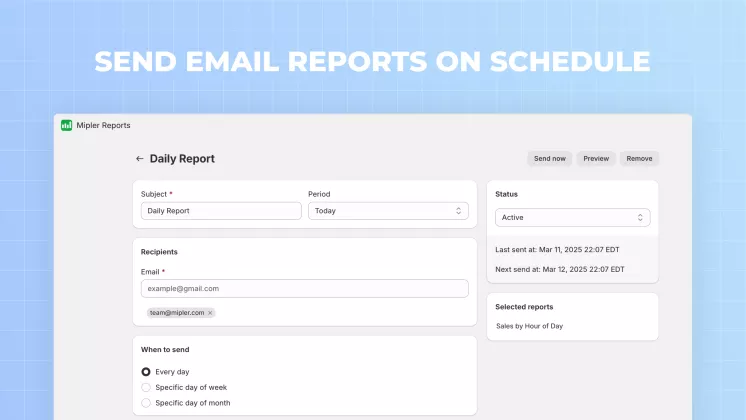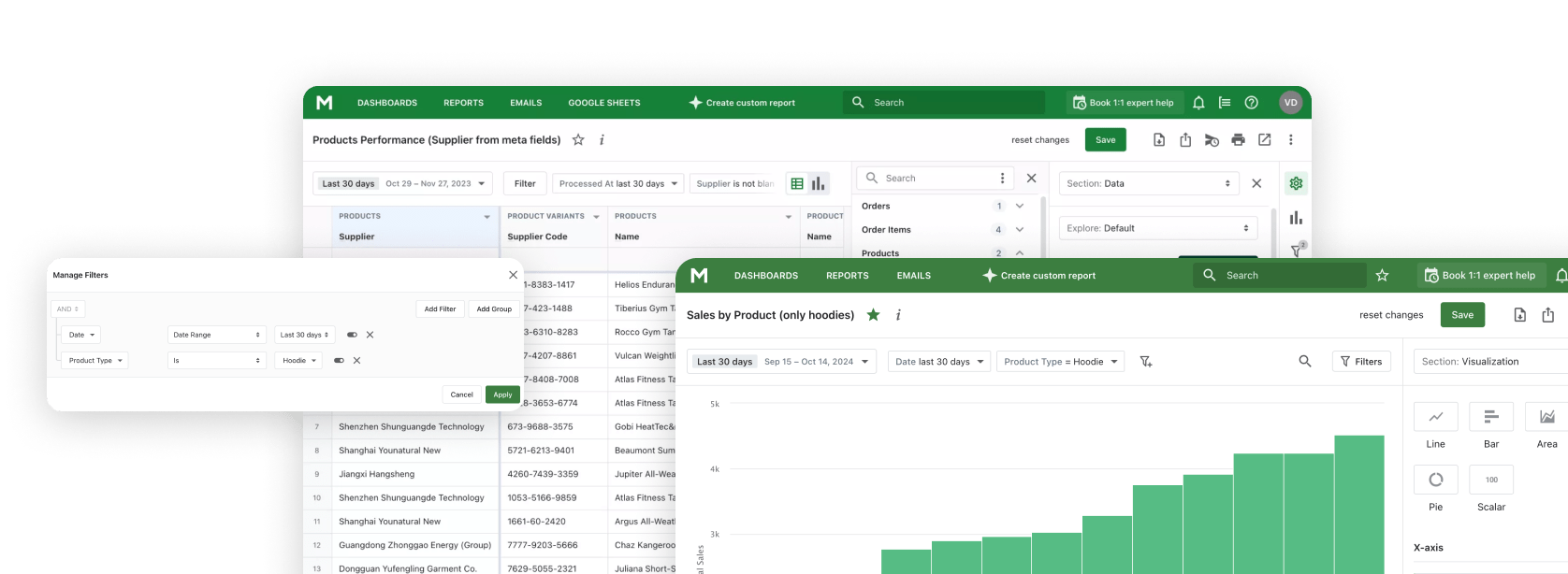Every Shopify store owner eventually faces a hidden profit killer: products that just don’t sell. These “dead” items quietly drain cash, take up valuable shelf space, and chip away at your profits. Imagine a fashion store still holding winter coats in March while spring collections fly off the racks every unsold product is money lost and space wasted.
Without a clear view of your inventory, these losses remain invisible, silently hurting your bottom line. Mipler’s Shopify Reports shows exactly which products are stagnant, when they were last sold, how many remain, and their total value, turning hidden losses into actionable insights before it’s too late.
Why the Shopify Dead Inventory Report Is Important
Goods that are not sold do not only occupy space they freeze working capital, charge more and may even become outdated. Inventory constitutes 30-50% of capital of most of the stores. When even 10% is dead stock, then thousands of dollars have been lost.
Consider two examples:
- A beauty store in Toronto found $12,000 tied up in slow-moving products. By discounting bundles, it recovered $2,500 in just two weeks.
- A home décor shop cleared 20% of its stagnant items during a seasonal sale, freeing space for new arrivals.
Dead stock silently eats away at profit, but spotting it early turns risk into opportunity.
Shopify Dead Inventory Reports – what’s available with Mipler
Mipler’s Dead Inventory Report makes creating Shopify Inventory Reports process simple. It lists:
- SKUs with no sales in a chosen period
- Last sale date and last stock update
- Current quantity on hand
- Total value of stuck inventory
Rather than manually monitoring spreadsheets, you can get a clear view of what is not moving and the amount of cash it contains.

Important
Check Dead Inventory Report on regular basis. A product which has failed to sell within 90 days might never sell it without any action. Regular inspection keeps your inventory in good condition, and your funds in the bank.
Quick checklist:
- Review report at least monthly
- Flag products with >60-90 days no sales
- Decide: discount, bundle, or remove
- Track improvements after clearance
Benefits of the Shopify Dead Inventory Report with Mipler
Using Mipler gives merchants practical advantages:
- Immediate visibility: See which items are costing money, with clear quantities and values.
- Data-driven actions: Percentages and totals make it easy to plan discounts, bundles, or donations.
- Time savings: Reports are auto-generated—no more manual Excel work.
- Flexible filters: Search by brand, category, or location to pinpoint problem areas.
- Scheduled alerts: Set weekly or monthly updates, so you never miss early warning signs.

Automate Your Shopify Dead Inventory Report to Optimize Your Store
Automation produces the best results. Using Mipler, you can choose to have the report sent weekly or monthly with no clicks. With time, merchants can see trends: perhaps 8% of stock dead each quarter, or certain lines sluggish in general. It is through these insights that you are able to keep your store lean and profitable.

FAQ
What is the Shopify Dead Inventory Report?
It’s a report showing products with no sales in a chosen time frame. Mipler lists each SKU, its last sale date, stock level, and value.
Why use it?
Dead stock ties up cash and loses value. Knowing exactly which products are stuck lets you take action before losses grow.
How do I view dead stock in Shopify?
Shopify’s admin has no direct “dead stock” view. With Mipler:
- Go to “Reports”
- Open the Dead Inventory Report
- Filter by category, brand, or location
How often should I run it?
At least monthly. Many merchants schedule weekly email updates so they can react faster to slow movers.
